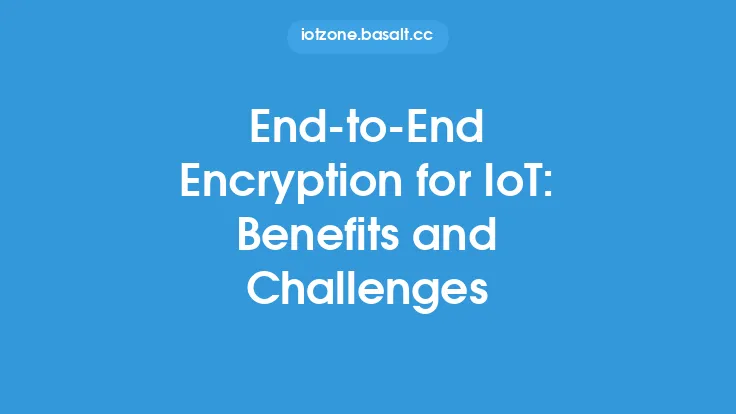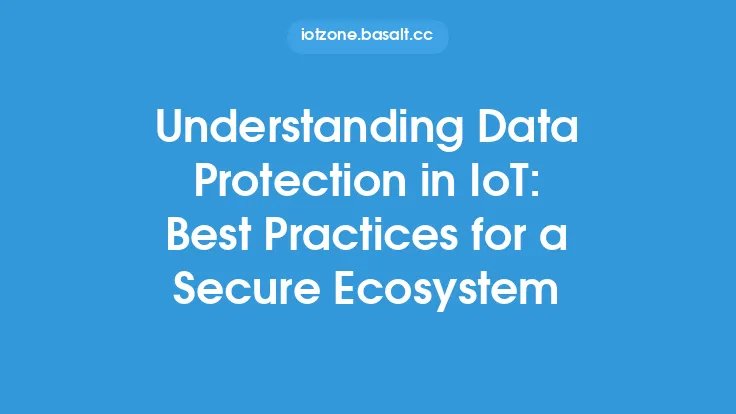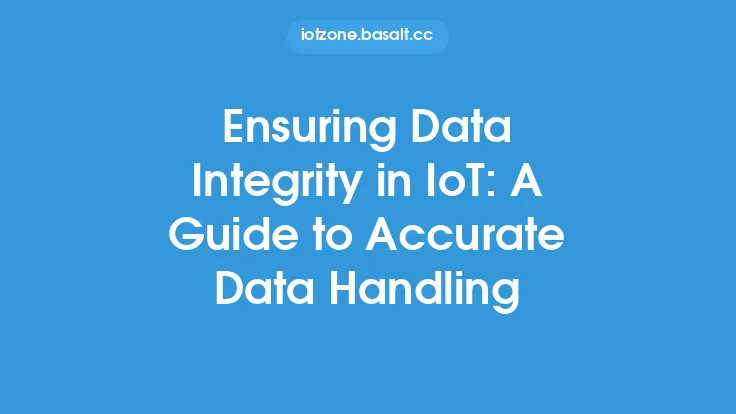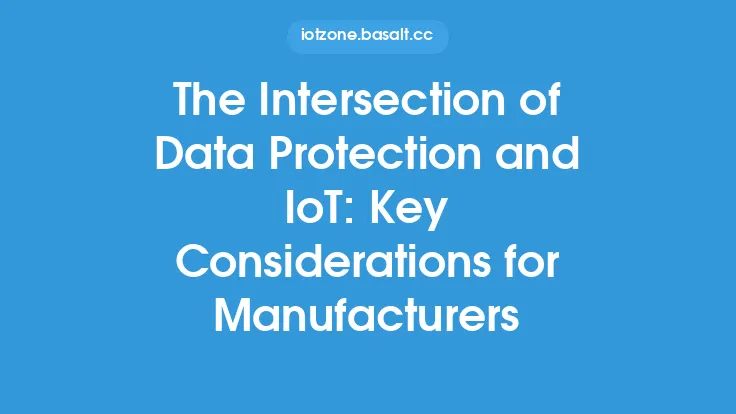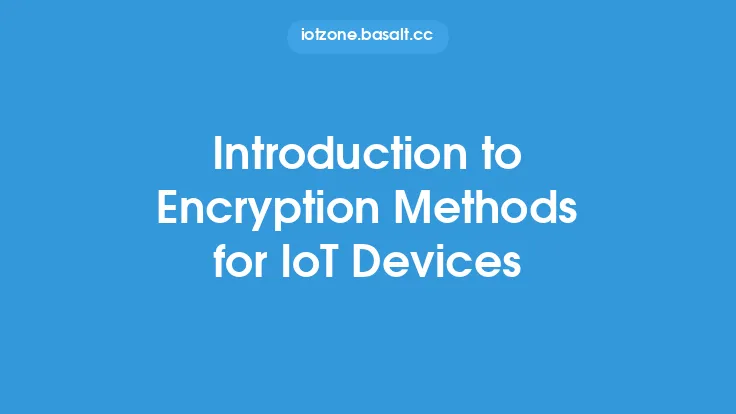The increasing number of IoT devices has led to a significant rise in the amount of data being transmitted over the internet. This data can be sensitive and confidential, making it a prime target for hackers and cybercriminals. As such, it is essential to ensure that IoT data in transit is protected from unauthorized access. One of the most effective ways to achieve this is through end-to-end encryption.
What is End-to-End Encryption?
End-to-end encryption is a method of secure communication where only the sender and the intended recipient can read the data being transmitted. This is achieved by encrypting the data at the source, using a key that is only known to the sender and the recipient. The encrypted data is then transmitted over the internet, where it can be accessed by intermediate nodes, such as routers and servers. However, these nodes cannot decrypt the data, as they do not have the decryption key.
How End-to-End Encryption Works for IoT Data
In the context of IoT, end-to-end encryption works by encrypting the data at the device level, before it is transmitted to the cloud or other devices. This ensures that even if the data is intercepted or accessed by unauthorized parties, it will be unreadable without the decryption key. The encryption process typically involves the following steps:
- Key Exchange: The IoT device and the intended recipient exchange encryption keys, which are used to encrypt and decrypt the data.
- Data Encryption: The IoT device encrypts the data using the shared key.
- Data Transmission: The encrypted data is transmitted over the internet to the intended recipient.
- Data Decryption: The recipient decrypts the data using the shared key.
Benefits of End-to-End Encryption for IoT Data
End-to-end encryption provides several benefits for IoT data in transit, including:
- Confidentiality: The data is protected from unauthorized access, ensuring that sensitive information remains confidential.
- Integrity: The data is protected from tampering, ensuring that it is not modified or altered during transmission.
- Authenticity: The data is authenticated, ensuring that it comes from a trusted source.
- Compliance: End-to-end encryption helps organizations comply with regulatory requirements, such as GDPR and HIPAA.
Challenges of Implementing End-to-End Encryption for IoT Data
While end-to-end encryption is an effective way to protect IoT data in transit, there are several challenges to implementing it, including:
- Key Management: Managing encryption keys can be complex, especially in large-scale IoT deployments.
- Performance: Encryption and decryption can impact device performance, especially in resource-constrained devices.
- Interoperability: Ensuring interoperability between different devices and systems can be challenging.
- Scalability: End-to-end encryption can be difficult to scale, especially in large-scale IoT deployments.
Best Practices for Implementing End-to-End Encryption for IoT Data
To overcome the challenges of implementing end-to-end encryption for IoT data, the following best practices can be followed:
- Use Standardized Protocols: Use standardized protocols, such as TLS and IPsec, to ensure interoperability and scalability.
- Implement Key Management: Implement a robust key management system to manage encryption keys.
- Optimize Performance: Optimize device performance by using efficient encryption algorithms and minimizing the impact of encryption on device resources.
- Monitor and Audit: Monitor and audit encryption processes to ensure that they are working correctly and that data is being protected.
Future of End-to-End Encryption for IoT Data
The future of end-to-end encryption for IoT data is promising, with several emerging trends and technologies, including:
- Quantum-Resistant Encryption: The development of quantum-resistant encryption algorithms to protect against quantum computer attacks.
- Homomorphic Encryption: The development of homomorphic encryption, which allows computations to be performed on encrypted data.
- Edge Computing: The increasing use of edge computing, which enables data to be processed and encrypted closer to the source.
- Artificial Intelligence: The use of artificial intelligence to optimize encryption processes and improve device performance.
Conclusion
End-to-end encryption is a critical component of IoT security, providing a secure and reliable way to protect data in transit. By understanding how end-to-end encryption works, its benefits, and its challenges, organizations can implement effective encryption solutions to protect their IoT data. As the IoT landscape continues to evolve, it is essential to stay up-to-date with emerging trends and technologies to ensure that IoT data remains protected and secure.
